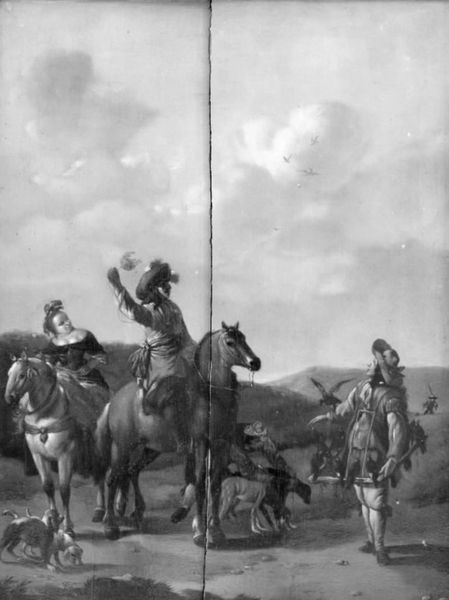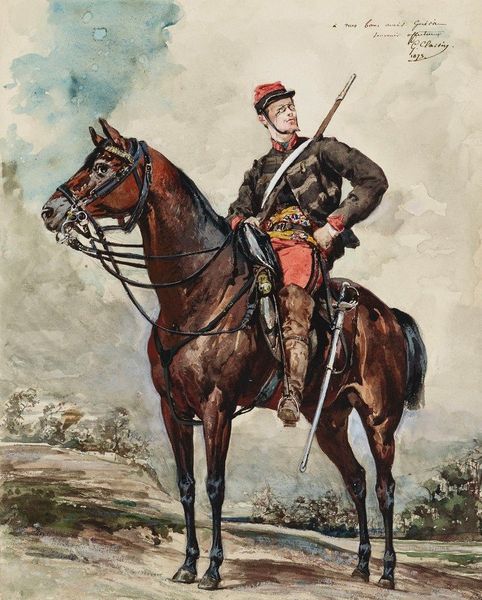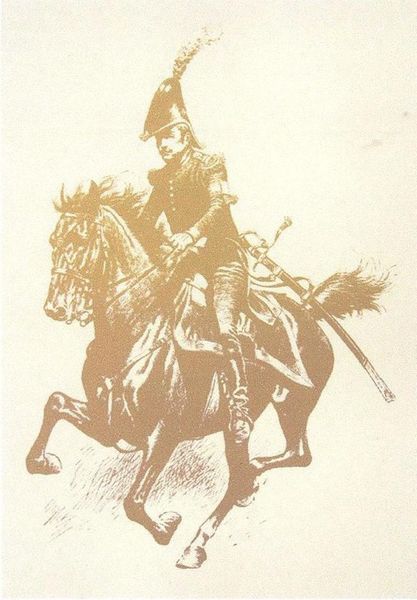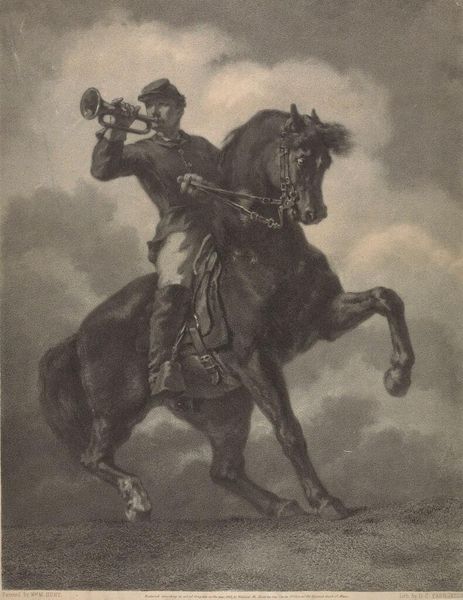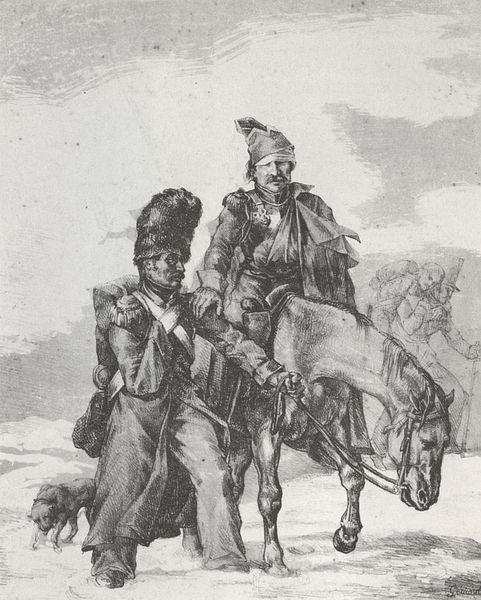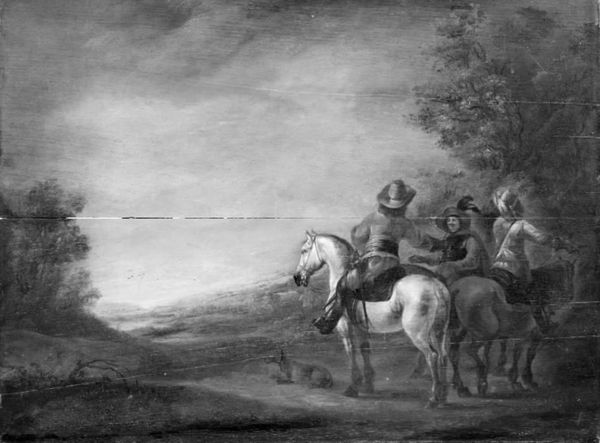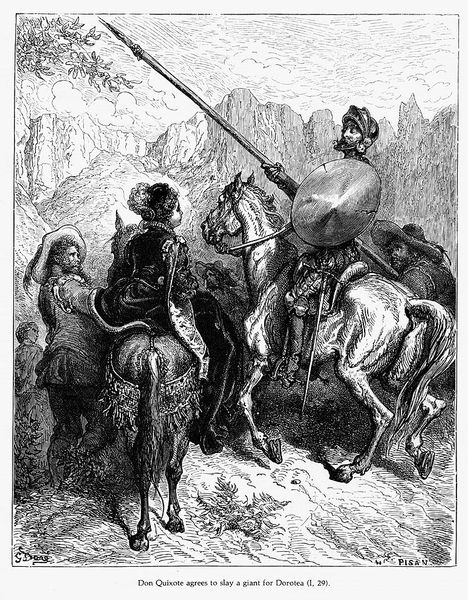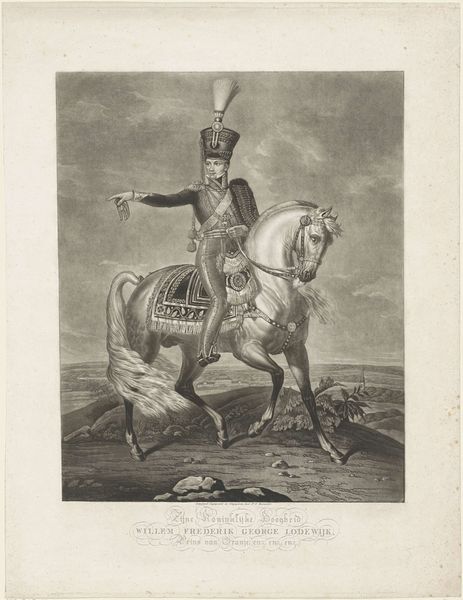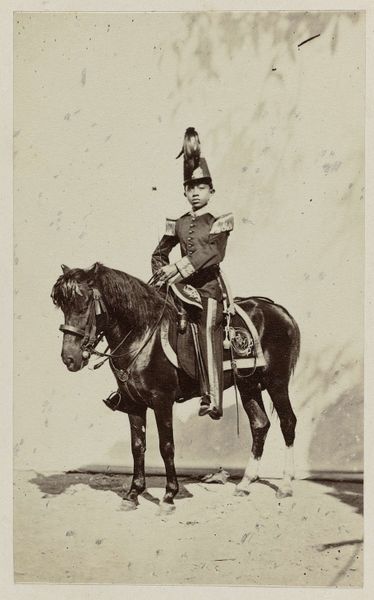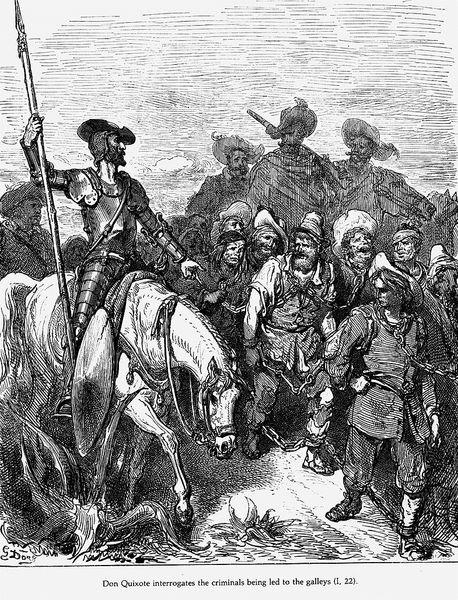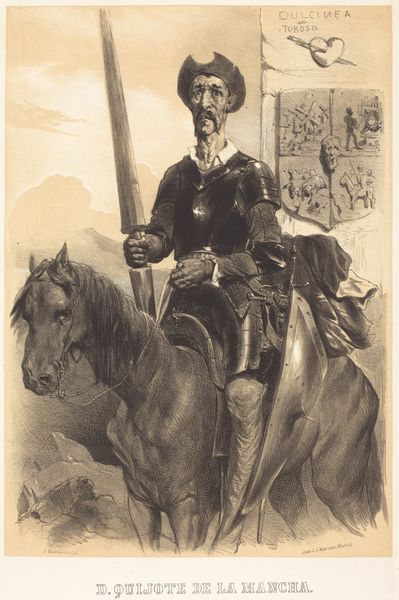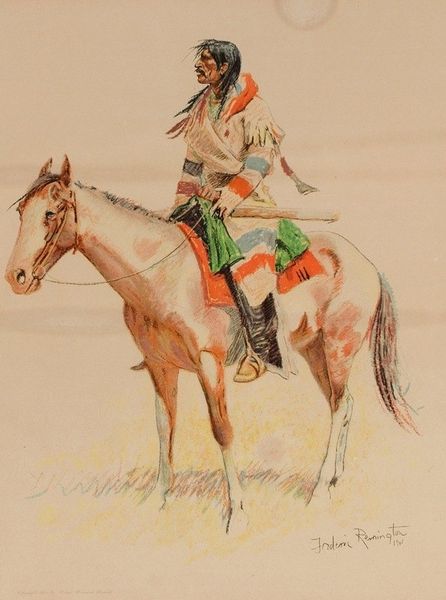
sculpture
#
black and white photography
#
black and white format
#
charcoal drawing
#
charcoal art
#
black and white theme
#
sculpture
#
black and white
#
france
#
monochrome photography
#
monochrome
#
charcoal
#
graphite
Dimensions: 105.1 × 90.2 cm (41 3/8 × 35 1/2 in.)
Copyright: Public Domain
Editor: This is "The Out-Post" by Ernest Meissonier, circa 1880. It looks like it's charcoal and graphite. I'm immediately drawn to how somber the entire piece is, despite seemingly depicting a serene landscape with a soldier on horseback. How do you interpret this work? Curator: From a materialist perspective, this artwork reveals a fascinating tension between its intended subject – romanticized military life – and the economic realities of its creation. Consider Meissonier’s meticulous process, the laborious hours spent rendering detail. This contrasts sharply with the industrial-scale production of weaponry that made such "heroic" poses possible. Editor: That's interesting. So you’re saying the means by which this image exists—charcoal, graphite—reflects, or perhaps even contradicts, the narrative? Curator: Exactly. Think about the French societal context. The post-Industrial Revolution. Art becomes a commodity alongside mass-produced goods. This drawing, with its crafted touch, becomes a critique of the industrial war machine it depicts. What does the texture of the charcoal tell us about the artist's hand versus the cold steel of the rifle? Editor: It highlights a disconnect, maybe even a kind of manufactured nostalgia. The romantic ideal versus the grim reality enabled by industrial warfare. Curator: Precisely. And examining the paper itself - what kind of paper, how accessible was it - reveals social stratifications related to art production and consumption during that era. Ultimately, focusing on materials unveils these underlying societal tensions, disrupting traditional narratives around warfare. Editor: I never considered looking at it that way. Focusing on the actual materials adds a layer of critique I hadn’t recognized before. Thanks for this insight! Curator: It is a reminder that art isn’t created in a vacuum but is inextricably linked to its material and social circumstances.
Comments
No comments
Be the first to comment and join the conversation on the ultimate creative platform.
